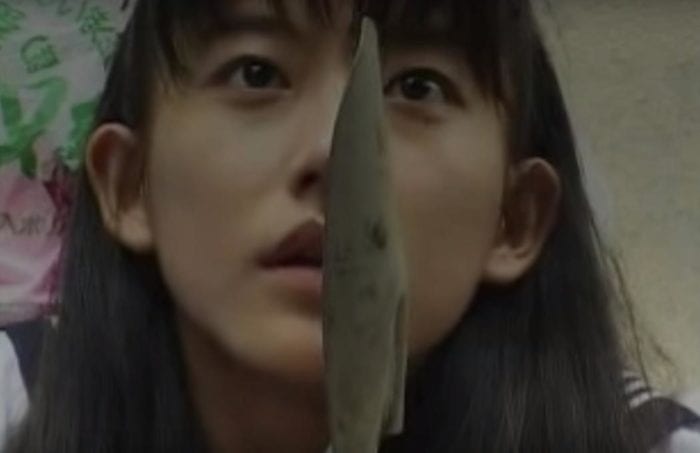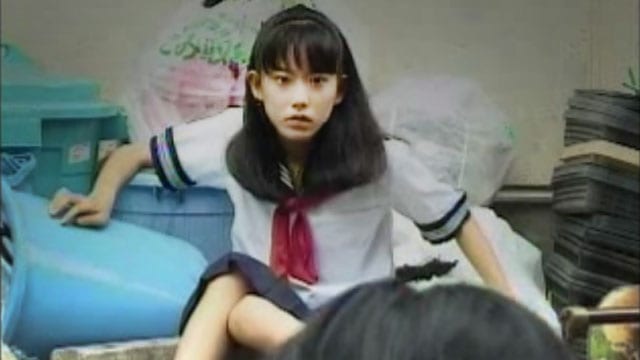1998 was an important year for a new wave of Japanese Horror (J-Horror) with the introduction of the Ringu and Ju-On franchises. Both would go on to such popularity in Japan that they would begin a trend of American remakes in the 2000s starting with The Ring in 2002, followed closely by The Grudge in 2004. American audiences were subsequently given nightmares filled with ghostly white spirits and scuttling, black-haired women seeking to murder them.
While the filmmaking and type of horror presented on the screen may have changed, this new chapter in J-Horror found its grounding in past Japanese horror classics. Much of Japanese horror was deeply shaded by World War II and the bombing of Hiroshima and Nagasaki—considering the devastating immediate effects of the bombs and the long-term impact of radiation on the health of Japanese citizens. The most significant film within Japanese horror is Gojira and its voluminous sequels and Hollywood reboots. Yet, there was another strain to come out of this historical trauma, the vengeful ghost.
The film that really captured the imaginations and narrative intrigues of Japanese audiences was Kwaidan (1965). The film was an anthology of traditional ghost stories taken from Lafcadio Hearn’s collections of Japanese folk tales. Each segment is set in the historical wiles of feudal Japan with samurai, woodcutters, and priests. While its placement within the film is largely aesthetic, the imagery that ties Kwaidan to the new wave of J-horror is the focus, especially in the first segment “The Black Hair”, is this focus on unkempt, black hair and the vengeful female spirit that lies behind it. This would become a central design aspect of modern J-horror and has become somewhat of a modern-day trope of horror.

However, within the scope of 21st century J-horror franchises, Ju-On has maintained the longest streak of sequels, reboots, and cycles. The ideas that would ultimately give birth to the film series that is literally translated as “Curse Grudge” started as two shorts featured within the television movie, Gakko no Kaidan G.
Katasumi (aka In a Corner) features two Japanese girls who are taking care of a pet rabbit until one injures their finger and the other goes to get a bandage for her. The girl’s blood that is seeping from her finger seems to attract a murderous female spirit (Kayako) who appears from behind a tree and attacks our main character. When the other girl arrives, she too is confronted by the spirit but notices that her friend, too, has become an evil spirit seeking to kill her.
4444444444 features a young man cycling through an alleyway near a public building where he hears a cell phone ring. Upon retrieving it, he sees the call is come from the number 4444444444 and answers it only to hear what sounds like an angry cat on the other line, but no one else says anything to him. He hangs up and they call again. This time he answers to the same sounds, but he gets the feeling he is being watched and asks if they are watching him. He finally turns to his side and there is a young boy (Toshio), who is incredibly white and ghostlike, who screams like a cat with ooze falling from his mouth and attacks the young man.
Watching both of these short films only takes 6 minutes to complete. They are succinct in build-up and in release. They are not gory and do not show the attacks on our protagonists. Instead, director Takashi Shimizu leaves only grave images of vengeful spirits to fuel the audience’s nightmares. While we can assume the fates of our protagonists in both films, we are not given confirmation of our assumptions. We are left in limbo.
The most important element these films do is their introduction of Kayako and Toshio who are key antagonists throughout the Ju-On franchise. However, we are given no information about their backstories, why they prey on the living, or what can end their campaign of evil. The most significant thing we are given is in their appearances. If Japanese audiences, at the time, were privy to knowing the villain, Sadaku, in Ringu earlier in 1998, then Kayako’s presence would not be significantly new to them. In many ways, it could be very easy to confuse which vengeful female spirit is in which J-horror flick. Those of us with 15-20 years of removal look back on Kayako and see an archetype of Japanese horror.
Yet there are some touchpoints in the appearances and movements of Kayako and Toshio that find their origins in past Japanese horror and in Japanese cultural history. Bihaku is a Japanese term meaning “beautifully white” which was coined in the 1900s for a concept that has been central to Japanese preference since the Heian Period (794-1185). These values have been passed to other countries that came under Japanese colonial control including Taiwan and Korea where whitening products have significant markets. While this form of colorism is often the result of European colonial control, the Japanese adopted these ideals before colonization, yet questions of colorism are still persistent in Japan even though skin whitening products remain ubiquitous in the culture. In this way, Kayako and Toshio feel like exaggerated incarnations of a cultural ideal that has largely gone unquestioned and continues to haunt the Japanese landscape today.
I remembered this Japanese dance group that would paint their naked bodies white and perform like that. It was very frightening to me, so I painted my ghosts white and also showed their faces. – Takashi Shimizu Interview, Neo

Along with bihaku, Shimizu, above, alludes to a mid-20th century Japanese contemporary dance style called Butoh which contains, among other aspects, hyper-controlled motions and inward rotated legs and feet, as well as the performers’ mostly nude bodies being painted in a stark white. This appearance almost has seemingly rebellious commentary towards bihaku skin and products. True white is actually terrifying within these choreographed worlds of dance. One site says the butoh seeks to “search for a representation of the body that would be free of cultural references and open to all metamorphosis.” It does seem that Shimizu picked up on that abstract current of artistic expression even at a young age. Bodies can metamorphosize into something evil and unnatural within the cultural landscapes of horror.
Kayako and Toshio then represent some of these undercurrents within Japanese culture while being thrilling horror villains and iconic exports to American shores. While these two short films only tease what is to come, they speak enough visual language to give us some themes to marinate in as we move forward into the straight to video releases of Ju-On: The Curse and Ju-On: The Curse 2.


